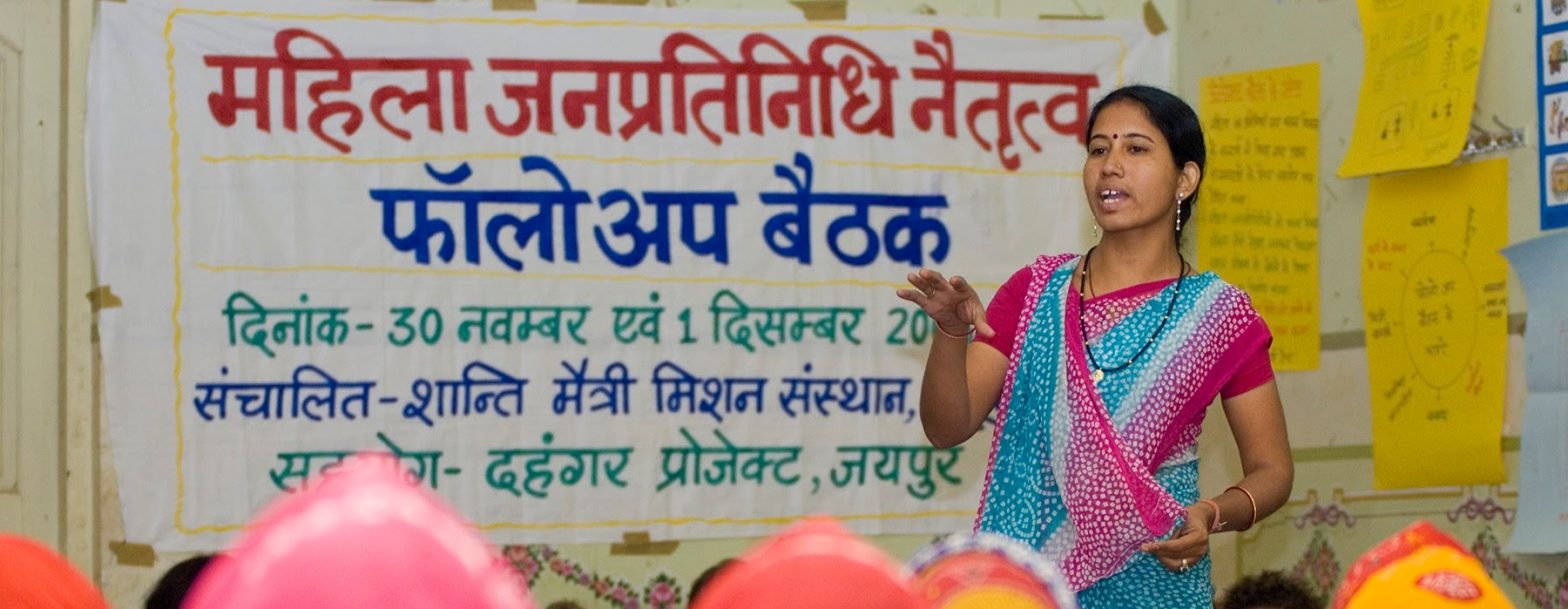Fourth in a series for 16 Days of Activism Against Gender-based Violence
On this day in 1919, American-born Nancy Witcher Langhorne Astor (Lady Astor) became the first woman elected to the British Parliament. Women gained the vote in the UK in 1918, and not until 1920 in the US.
During this same period, India was fighting for its independence. At the time it was won in 1947, feminists debated – should there be a quota for women’s seats in India’s government, or would independence bring them to power “naturally?” The answer became clear. To this day, India is in 103rd place out of 140 countries, with just 12% female representation in Parliament.
In April 1993, however, the 73rd Amendment to India’s constitution strengthened the system of local government, and reserved one third of all seats to women – bringing 1.3 million women to positions of power in what has been described as the “greatest social revolution of our lifetime.”
At first, given the patriarchal structure of most of rural India, even feminists expressed the concern that these women would simply be “rubber stamps” of their powerful husbands or fathers. In November of 1998, however, Geeta Mukherjee MP declared – “I have met these women. Some of them may start out that way, but after four or five meetings, they are nobody’s rubber stamps.”
My organization’s India chapter has devoted its entire strategy to developing the capacity of these women leaders – working with more than 120,000 of them to date – including organizing them into federations where they can engage powerfully and constructively with the government administration. The women leaders prioritize issues that matter most to women, such as health, nutrition, clean water and keeping girls in school.
In terms of gender-based violence, there have certainly been instances of violent backlash. Long-established local community-based organizations (CBOs) support each woman in her journey of leadership. The elected women have the mobile phone numbers of the CBO staff, and can reach out to them 24/7. This is critical in that gender-based violence thrives on women’s isolation. The elected women, in turn, become the “hotline” for all the women in her constituency.
Perhaps most importantly, these elected women represent role models of what it looks like when women lead – both for community members, and for girls growing up.
Most recently, campaigns have been launched for elected women to serve as mentors for adolescent girls – teaching them their rights and encouraging them to stay in school and avoid child marriage which, while illegal, is still widely practiced. Nationwide, child marriage rates are 27%, but as high as 69% and 65% in the states of Bihar and Rajasthan, a focus of this campaign.
The results are inspiring. Please take the time to watch short videos of this miraculous process of unleashing the power of these adolescent girls at this link.
Overturning patriarchy will be a long struggle, but it is happening. We are fortunate to live in an era in which one half of our human family is seizing their full citizenship, and laying the foundations for a healthier, safer and more humane future for everyone.


